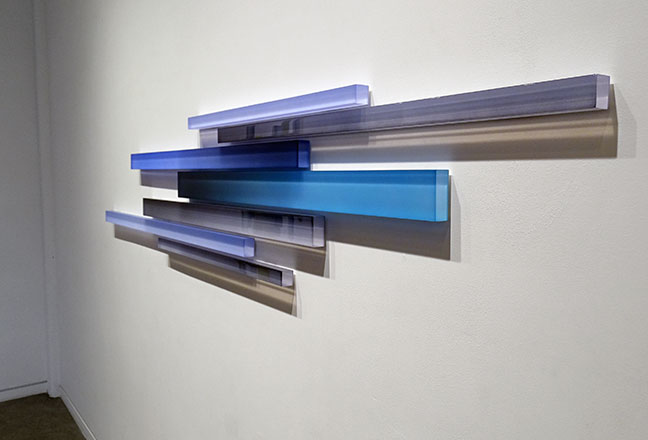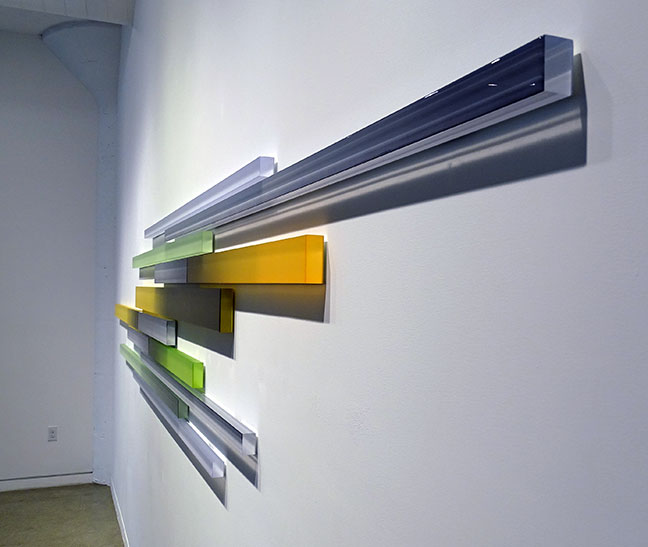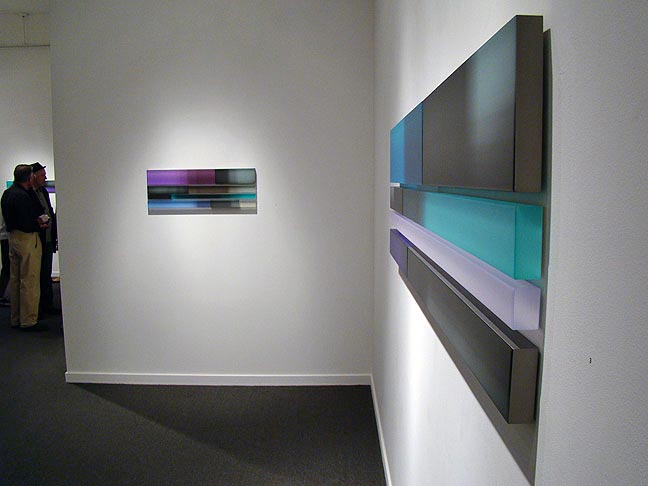Art Auction Fundraiser Tips and Pointers
for Artists, Nonprofits, Bidders
Holding an art auction is an excellent way for nonprofits to raise money, for artists and art-related businesses to publicize their art or products or services, and for bidders to buy quality art at reasonable prices. The following pointers will help everyone have a great time and realize their goals at art auction fundraisers, regardless of whether they're buying, selling, or donating.
Tips for artists:
** For artists interested in advancing their careers, good fundraisers for donating art are those that benefit visual arts organizations and attract members of the art community including collectors, gallery owners and related fine art professionals. These are among the best opportunities to get your art and your name out in front of anywhere from dozens to thousands of people who like art, collect art, patronize arts organizations, and support the visual arts in other ways.
** Donate to fundraisers for non-art causes only if the auction consists mainly of art or you believe strongly in the organization's cause or goals, and not because anyone promises you exposure or career benefits. Donating to a non-art fundraiser where art is mixed in with lots of other merchandise, or to one that attracts mainly people from fields other than art usually does little or nothing for your career.
** If you're not familiar with an organization that's requesting a piece of your art, do some research, find out who they are, make sure you want to support their cause, find out whether they've conducted art fundraisers in the past and if yes, for how long and how successful they've been. You might even ask for names of artists who are donating to the event or who have donated in the past and contact them about their experiences.
** At the very least, expect free admission to any event you donate to. Also find out how your art will be presented-- whether your name and bio will appear alongside your art at the event, and whether the work will be listed or pictured in a catalogue or online. Also make sure your contact information or a web link will be published in either the catalogue or on the organization's website (email, phone, website, social media pages, etc.).
** Before you decide which piece of art to donate, talk to the people conducting the auction and ask what types of art and what price ranges sell best. Better yet, ask if they'll provide you with either websites or catalogues of previous auctions so you can see for yourself. The more accurately you pinpoint bidders' tastes and budgets with your donation, the better the chances your art will attract attention and sell for a respectable price.
** Donate a good piece of art. Don't donate the worst, least significant or most outdated piece you have lying around your studio. You want your donation to reflect positively on your level of generosity as well as on the quality and type of art you currently produce. Putting inferior works of your art out into the public just because you want to get rid of them is never a good idea.
** Include a brief bio, resume, website or social media links, and contact information with your art. You want to attract and introduce yourself to as many new collectors as possible. People who like your art tend to bid higher when they can research you in advance, know something about you, can see what you've accomplished in your career, and can contact you if they want to buy or learn more. Keep it simple though-- bio and career high points will do fine for now.
** Whether your art auctions silently or live, set the minimum acceptable opening bid and selling prices at reasonable levels, but not so low that they make no sense with respect to your typical selling prices. When you set minimum bid amounts too high, you scare bidders away. Remember that many people go to art auction fundraisers looking for bargains. Also remember that having nobody bid on your art does not reflect well on you and your career. If you're a good artist, you have an established track record of shows and sales, and people know it, your art will be bid up to a fair selling price no matter how low you set the minimum opening bid.
** If you do not want to sell your art below a certain minimum price, set your opening bid below that price, but tell the people conducting the auction to sell the art only if that minimum price is reached (assuming the auction will allow you to do this of course). For example, if you want your minimum selling price to be $500, start the bidding at $200. That way, even if the art doesn't sell, it'll at least attract bids. Be aware though that insisting on too high a minimum price may show that you're more concerned about yourself and how much your art sells for than you are about the cause and fundraising efforts of the organization you're donating it to.
** Cooperate with the people conducting the auction and generally do everything within your power to make sure your art sells. If they ask for certain information, provide it. The worst possible outcome at this type of event is for your art not to sell.
** Do not donate to every single cause that asks for your art, especially if you have gallery representation or sell regularly online or at other venues. You can actually end up diluting your market by donating too frequently, or giving collectors the idea that rather than shop at galleries or buy directly from you, all they have to do is wait for the next charity event and then buy on the cheap. If you really want to support lots of charities, either sell your art direct to buyers or through retail outlets and donate a portion of the profits.

(art by Freddy Chandra)
Tips for bidders:
** Look at all the art for dale. Fundraising art auctions are great places to discover and learn about art and artists you've never seen or heard of before.
** Don't automatically assume all the art is bargain priced. Find out about artists whose art you like before you bid. Many fundraisers list all the art online in advance of their events. Visit the auction website, preview the art either online or in person ahead of time, or at least get a list of the donating artists. That way, you'll be prepared to bid wisely.
** Make sure you're getting a quality example that's representative of an artist's work. Unfortunately, some artists donate low-end, oddball, or problem pieces they can't sell and just want to get rid of.
** Be generous. You're attending the auction to support the organization selling the art. Going a bit over budget is not so bad when those few extra dollars go to a good cause.
** Artists often attend fundraising art auctions and position themselves in the vicinity of their art. Keep your eye out for opportunities to meet artists in person, ask questions, and learn about their art, especially those artists whose work you like.
** Go easy on the intoxicants. Nothing is worse than finding out the next morning you've paid too much for a piece of art you can't stand to look at.

(art by Freddy Chandra)
Tips for organizations conducting art auction fundraisers:
** Publish submission guidelines for artist donors. Include pointers on what sizes and types of art sell the best, what price ranges bidders typically buy in, and how artists can effectively present themselves and their art.
** Tell artists how the auction is promoted, how they'll benefit from the publicity, and how many people are expected to attend the event. If possible, provide web links to past events so artists can better decide whether or not to participate. Resist any temptation to exaggerate the benefits of donating art.
** Urge artists to set minimum bids and selling prices as reasonably as possible.
** Publish a sale catalogue that includes a basic resume, career information and image for each artist and work of art that's for sale. Also post the catalogue online. The longer bidders have to see and think about the art and get familiar with it, the more comfortable they are about bidding. Additionally, the better you promote the event and the more art sells, the better quality art, artists and bidders you'll attract for your next fundraiser auction.
** Choose a venue with plenty of room, good ventilation, and adequate display space. You want everyone to have plenty of opportunity to see all of the art in a relaxed and comfortable setting. Contented bidders are active bidders.
** The admission price to the auction should include complimentary refreshments.
** Make sure the most active bidders get preferred seating. You might also offer them complimentary early or VIP considerations as part of their admission.
** Hire an auctioneer with experience doing fundraising auctions. Get names and contact information from other non-profits that have held successful charity auctions. Fundraisers are not like ordinary auctions where you want to move merchandise as fast as possible to bidders looking for bargains. They're conducted very differently, and experienced specialty auctioneers know how to do that. A skilled charity fundraiser auctioneer can make a substantial difference in an auction's bottom line.
** Your auctioneer should have a sense of humor, be able to excite an audience, present and describe each artist and item in an informed manner, encourage competition among bidders, entice extra bidding, and be capable of convincing bidders to be especially generous on behalf of the causes your organization represents.
** Make sure the auctioneer has concise notes describing each work of art and listing significant accomplishments of the artist who created it. Well described and presented art sells for more money than poorly described art. Keep descriptions and buildup brief however, and not so detailed that they begin to lose bidders' attention.
** Display each piece of art as prominently as possible and with sufficient space between each piece. The better the art looks in its surroundings, the higher bidders tend to bid. This is especially true for live auction items. Use quality easels, white gloves, clean white walls, well-spaced partitions, table skirts, pedestals, professional lighting, and whatever other embellishments you have on hand to enhance the dramatic impact of the art.
** Make sure bidders can easily find out more about any artist whose art they want to bid on. The more information buyers have access to, the more comfortable they feel about bidding and the higher they tend to bid.

(art by Freddy Chandra)

Current Features
- How to Buy Art on Instagram and Facebook
More and more people are buying more and more art online all the time, not only from artist websites or online stores, but perhaps even more so, on social media ... - Collect Art Like a Pro
In order to collect art intelligently, you have to master two basic skills. The first is being able to... - San Francisco Art Galleries >>


